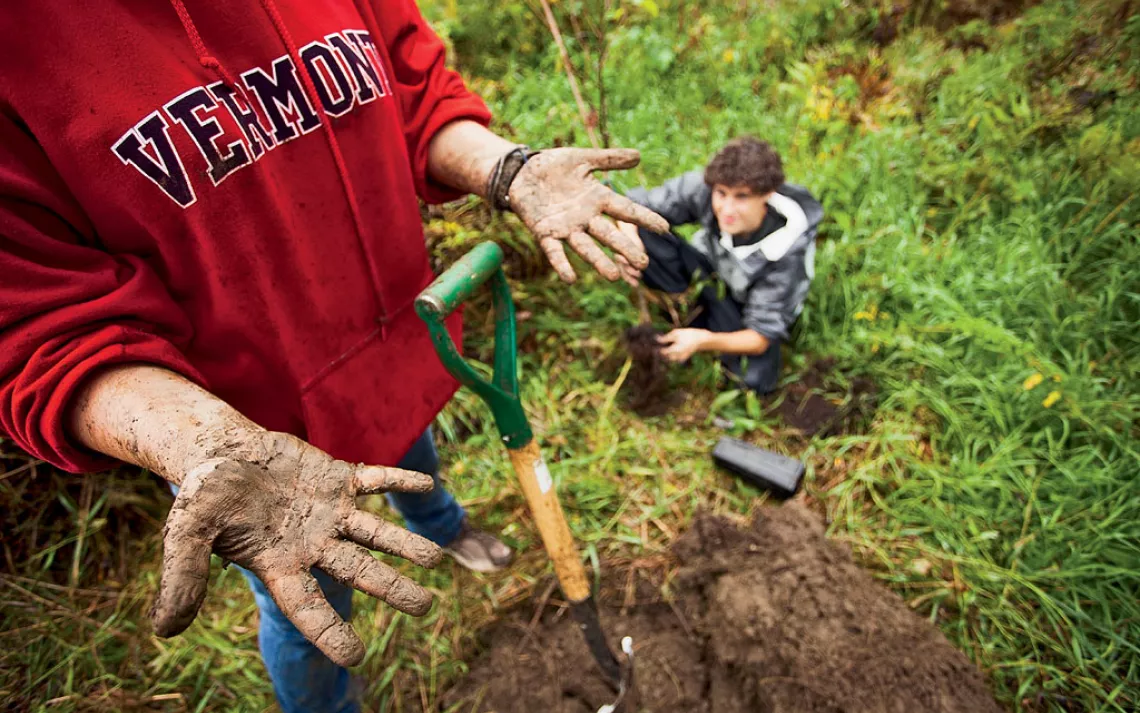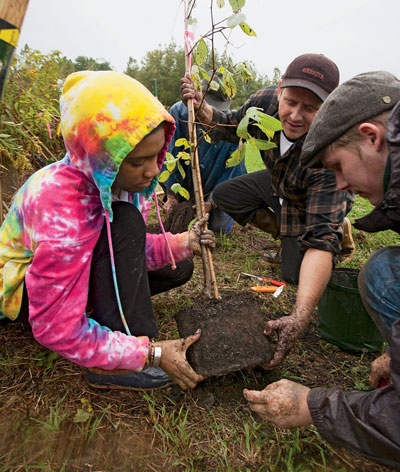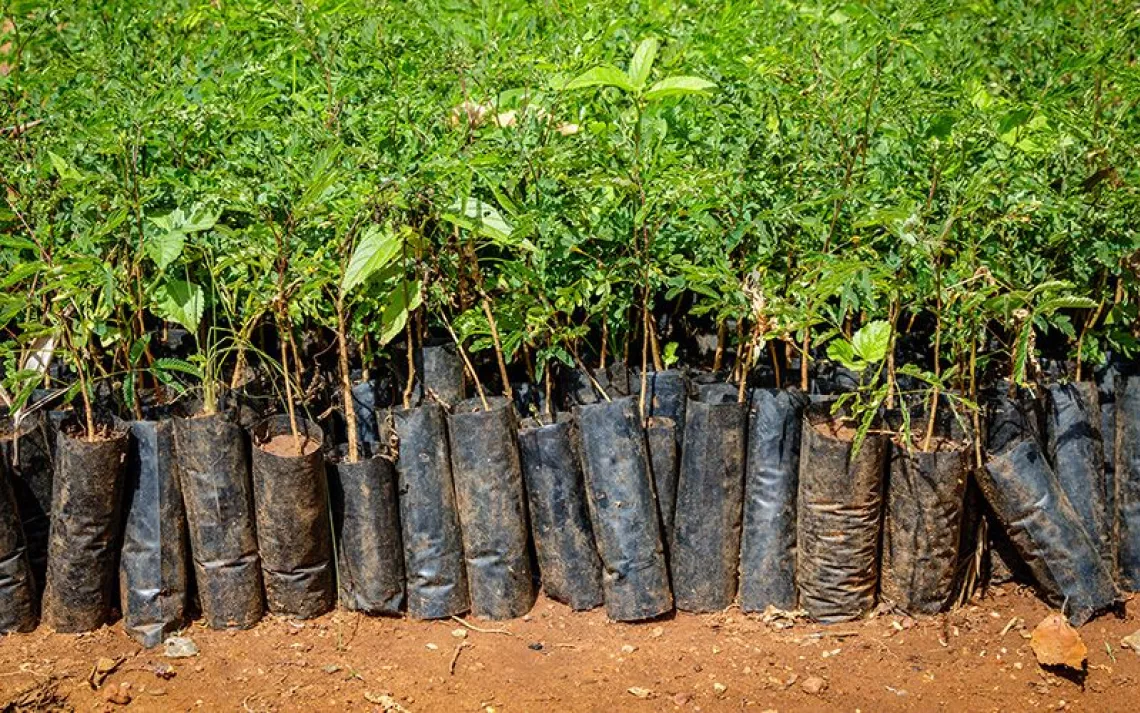The Measure of an Education
Many colleges claim that their eco-lessons are greening the world. Now some schools are trying to prove it.

Photo courtesy of Dan Hamerman/Green Mountain College
After decades of making ecology central to curriculum, campus, and culture, America's greenest universities are starting to ask a seemingly simple question: Is it working?
This summer, Green Mountain College in Poultney, Vermont, will be the first to seek a concrete answer to that question by surveying alumni to determine their impact on the planet. Instead of the anecdotal, marketing-oriented surveys on job status and salary that colleges typically dispatch to grads, Green Mountain's questionnaire will measure how its alumni are faring environmentally.
"What's unique about our survey is that it'll be the only one trying to figure out if there has been a positive impact due to our educational approach," says Aaron Witham, the school's sustainability coordinator. "It's definitely complex and a bit scary because it's entirely new, but we think it's important to begin gathering this kind of information."

Green Mountain College students plant trees to form a riparian buffer along the Poultney River.
The survey is part of Green Mountain's new eight-year plan to become "authentically sustainable": to not only measure and reduce the campus's ecological footprint but also assess how much (or how little) the school's graduates carry their alma mater's environmental ethic into home, work, and community.
Similar undertakings are being discussed at other colleges, including Prescott in Arizona and Oberlin in Ohio. These schools' shared concern is that it's no longer enough to assume that immersing young people in environmental education will push society in a more sustainable direction. They want to know whether their graduates are making a difference--to measure, in essence, the sustainability of a sustainable education.
"What does it mean to be authentically sustainable?" Witham says. "It means we aim to have a net positive impact on the world in three major capital stocks: natural, financial, and social. And one of the critical pieces is measuring the impact our alumni have."

The still-evolving plan involves gauging how the personal and professional lives of alumni affect the environment, possibly by using a simple carbon analysis as a proxy for their overall impact. For example, questions might inquire about recycling, water use, and driving habits. The annual survey--which will go to alumni 1, 3, and 10 years out from graduation--may ask, "How big is your house?" "How much local produce do you buy?" "Where do you shop for clothes?" and "How far do you commute to work, and how do you get there?" Responses, where applicable, will be compared with similar data gathered about the average American.
Such analyses are not only rare for colleges to undertake; they're unusual for any organization, according to James Pittman, the sustainability director at Prescott College. Measurements of real-world effects can be expensive, labor-intensive, and elusive, he says. "How would a magazine measure the downstream value from how their readership benefits from their content?" he asks. "How would a manufacturer or a software provider? It's very difficult."
Pittman points to the thorough sustainability studies of products made by the German athletic-gear company Puma as an example of how to successfully measure impact. But he says the process of determining the footprint of a sneaker pales in comparison to the complexity of developing metrics on something as diffuse and subjective as a green education's long shadow. "The big challenge," he says, "is asking the right questions."
So, for a college's survey to be of greatest value, he suggests, it should look beyond the lifestyles of current and former students and also try to identify techniques most likely to produce graduates who contribute to a more sustainable society. For now, Prescott relies on testimonials from graduates who report that eco-lessons gleaned at college made them greener people. "Through those stories," Pittman says, "we know we're having a positive impact."
But Green Mountain College's Witham believes in taking things further--he asserts that developing some sort of objective measurement of alumni greenness is a worthy goal. Bryan Stubbs, one of Oberlin's eco-heads, concurs; people at his school have begun discussions about how they, too, might go about it. More sustainability managers are agreeing that they'd like to see green schools collaborate on developing a common yardstick for their alumni footprint. "We want to create a model for doing this kind of analysis that other schools can follow," Witham says. "We have to know what works and what doesn't."
 The Magazine of The Sierra Club
The Magazine of The Sierra Club







